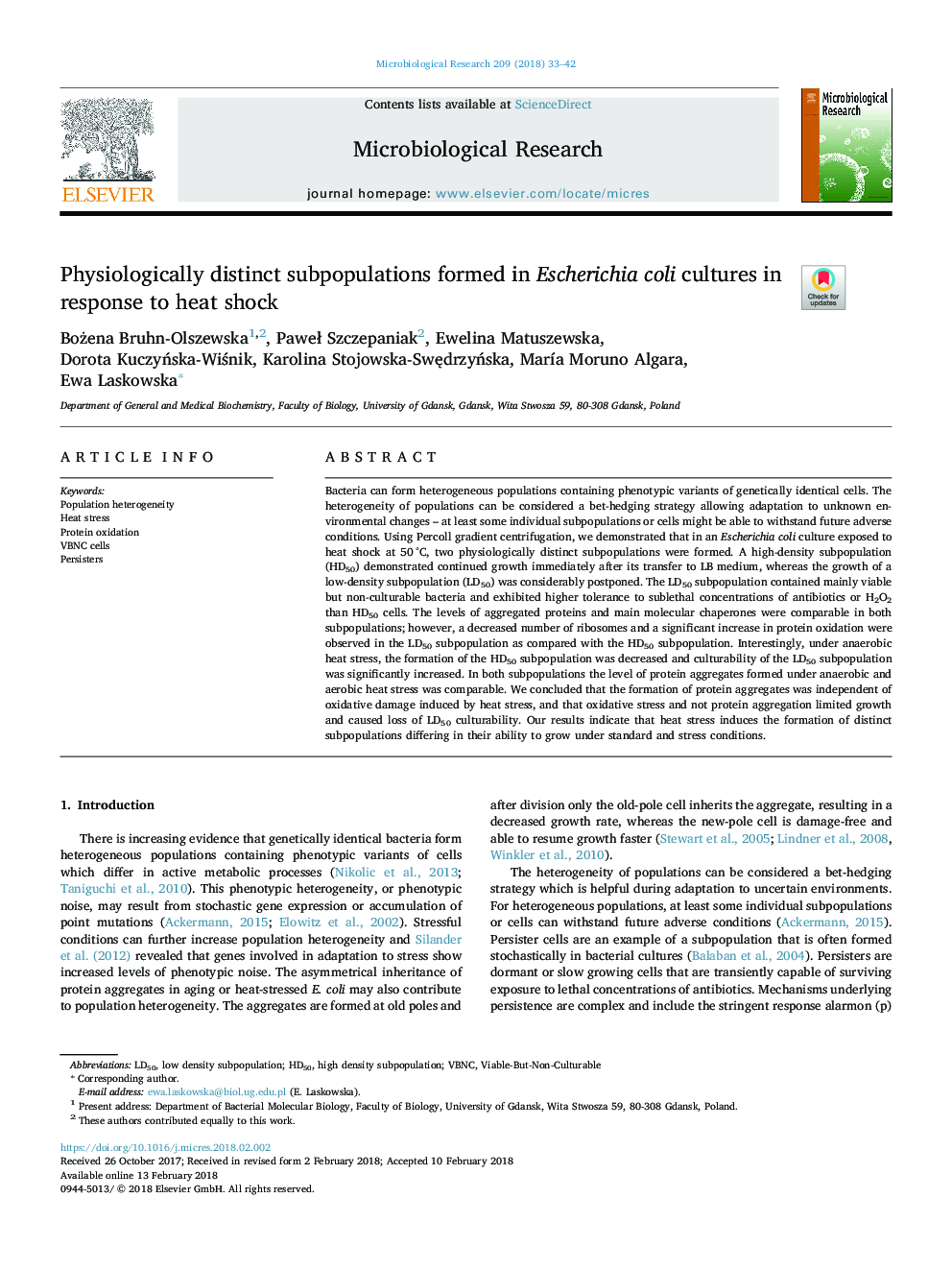| کد مقاله | کد نشریه | سال انتشار | مقاله انگلیسی | نسخه تمام متن |
|---|---|---|---|---|
| 8422999 | 1545965 | 2018 | 10 صفحه PDF | دانلود رایگان |
عنوان انگلیسی مقاله ISI
Physiologically distinct subpopulations formed in Escherichia coli cultures in response to heat shock
دانلود مقاله + سفارش ترجمه
دانلود مقاله ISI انگلیسی
رایگان برای ایرانیان
کلمات کلیدی
موضوعات مرتبط
علوم زیستی و بیوفناوری
بیوشیمی، ژنتیک و زیست شناسی مولکولی
بیوتکنولوژی یا زیستفناوری
پیش نمایش صفحه اول مقاله

چکیده انگلیسی
Bacteria can form heterogeneous populations containing phenotypic variants of genetically identical cells. The heterogeneity of populations can be considered a bet-hedging strategy allowing adaptation to unknown environmental changes - at least some individual subpopulations or cells might be able to withstand future adverse conditions. Using Percoll gradient centrifugation, we demonstrated that in an Escherichia coli culture exposed to heat shock at 50â¯Â°C, two physiologically distinct subpopulations were formed. A high-density subpopulation (HD50) demonstrated continued growth immediately after its transfer to LB medium, whereas the growth of a low-density subpopulation (LD50) was considerably postponed. The LD50 subpopulation contained mainly viable but non-culturable bacteria and exhibited higher tolerance to sublethal concentrations of antibiotics or H2O2 than HD50 cells. The levels of aggregated proteins and main molecular chaperones were comparable in both subpopulations; however, a decreased number of ribosomes and a significant increase in protein oxidation were observed in the LD50 subpopulation as compared with the HD50 subpopulation. Interestingly, under anaerobic heat stress, the formation of the HD50 subpopulation was decreased and culturability of the LD50 subpopulation was significantly increased. In both subpopulations the level of protein aggregates formed under anaerobic and aerobic heat stress was comparable. We concluded that the formation of protein aggregates was independent of oxidative damage induced by heat stress, and that oxidative stress and not protein aggregation limited growth and caused loss of LD50 culturability. Our results indicate that heat stress induces the formation of distinct subpopulations differing in their ability to grow under standard and stress conditions.
ناشر
Database: Elsevier - ScienceDirect (ساینس دایرکت)
Journal: Microbiological Research - Volume 209, April 2018, Pages 33-42
Journal: Microbiological Research - Volume 209, April 2018, Pages 33-42
نویسندگان
Bożena Bruhn-Olszewska, PaweÅ Szczepaniak, Ewelina Matuszewska, Dorota KuczyÅska-WiÅnik, Karolina Stojowska-SwÄdrzyÅska, MarÃa Moruno Algara, Ewa Laskowska,